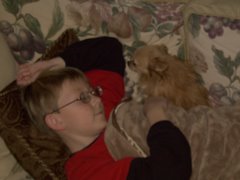Elements of the genre:
Character: a person represented in a plot, as well as the unique qualities that make up the personality.
"a lot of character" = if one has integrity and stands up to pressure.
"to be a character" is when one may provoke laughter, annoyance, or reproach.
Plays rely upon characters because people portray characters on stage, a concrete manner.
When actors are "in character" then they speak and behave as the character they are portraying on stage.
Protagonist, antagonist, hero, heroine, foil (character that brings out qualities in another character by contrast), stereotypes.
Plot and Structure
The invention, selection, and arrangement of the action for the story, thus there can be no PLOT without some unifying sense of the purpose that joins the story line to the characters and the theme.
A "dramatic irony" is when the fulfillment of the plan, action, or expectation comes as a surprise, often the opposite of what the characters intended.
Stages, Sets, and Setting
Stages: Thrust stage (audience sits around three sides of the stage), Arena stage (when the audience sits all around the stage), and the Proscenium stage (typical stage, all audience is set in front of the stage on different levels.
Sets/Setting: background of the stage, movable walls, curtains, murals, furniture, pictures of scenery...etc.(the design and decoration and scenery)
PROPS: articles or objects used on stage to assist in the portrayal of the drama.
Tone, Style, and Imagery
Tone: the style or manner of expression, speaking loudly/softly, sweetly/angrily, accent/native, fear/love/sarcasm...
Theme: a statement or assertion about the subject of a work. Not part of the work, but an idea extracted by the impact of the entire work.
Response to Susan Glaspell's "TRIFLES"
The "script" sets forth the CHARACTERS first, then sets the SCENE with a description of what the audience will see when the curtains open...every detail such as where certain characters are on the stage, what their emotional state may be, how they may be dresses, and the sets and props.
Then, before each LINE to be read by a specific CHARACTER is that characters name and perhaps a notation directed at how the character should behave or move.
the title sounds like it's a story about small occurrences, maybe funny or witty...
I love the way the characters were so nosey as they went through the house of the scene of the crime. All that banter back and forth about this and that...hooey, just like folks do! Also, the way the men behave as opposed to the way the women behave...and that the two women conceal that they might feel the woman did murder her husband, yet they make all kinds of excuses for how hard it it to be alone all day and how the women's personality had changed so much from when she was young and happy. The Sheriff and the County Attorney just figure the woman is guilty of the murder and they are looking for evidence to support that belief...kind of funny and tragic all at once. And, that poor little canary. Really vivid images of the setting, the characters and their behaviors, the theme (concealing a crime?, justifying poor behavior?), the props, how the characters were to move about the stage sets, and all the wonderful facial expressions on the characters.
This type of Literature seems difficult to write, but then again, maybe after you do it for a while that you would just almost see everything like a script? Probably "think" that way...in that world!
Wednesday, April 25, 2007
Subscribe to:
Post Comments (Atom)



No comments:
Post a Comment